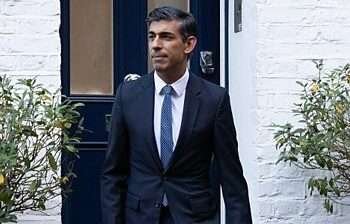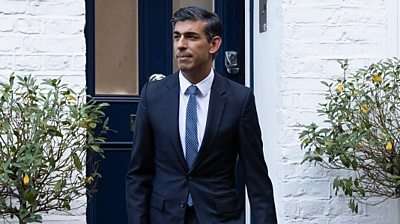Britain’s economic outlook is entering increasingly turbulent waters as the Office for Budget Responsibility (OBR) issued a warning about the growing national debt, citing it as a “substantial erosion of the UK’s capacity to respond to future shocks and growing pressures on the public finances.”
Chancellor Rachel Reeves now faces mounting pressure to patch a gaping multi-billion-pound hole in the government’s finances ahead of her autumn Budget. The shortfall, estimated at over £5 billion, stems from Prime Minister Keir Starmer’s decision to reverse course on welfare reform. An additional £1 billion is needed to reinstate winter fuel payments for millions of pensioners following a separate U-turn.
The situation is further complicated by the likelihood of a downgrade in the UK’s economic growth forecast, which threatens the limited fiscal headroom Reeves currently enjoys under her own rules. With the global economy reeling from President Donald Trump’s intensifying trade war, the OBR’s projections are growing gloomier by the day.
Debt Levels Near Historic Heights
In its latest fiscal sustainability report, the OBR stated that “The UK’s public finances have emerged from a series of major global economic shocks in a relatively vulnerable position.” Government debt at the close of last year stood at 94% of GDP, making it the sixth highest among developed economies. Meanwhile, the UK ranked third for borrowing costs globally, numbers that underscore just how precarious the fiscal foundation has become.
The OBR criticized recent government strategies to stabilize the economy, noting that efforts had “met with only limited and temporary success.” It added: “Planned tax rises have been reversed, and, more significantly, planned spending reductions have been abandoned.”
The string of reversals, particularly on welfare cuts and fuel allowances, has led public debt to balloon to levels not seen since the 1960s. According to the OBR, that trend will persist into the medium term, driven by sluggish growth and rising interest rates. “Halting the increase in national debt has become considerably more challenging,” the watchdog warned.
Adding to the fiscal headache are external geopolitical tensions. President Trump’s tariff hikes have already triggered what the OBR described as “the largest increase in effective global tariff rates in more than a century.” The resulting trade instability has placed new demands on the UK’s budget, not least the expectation to significantly boost defense spending.
Responding to growing pressure, the prime minister has committed to the “biggest increase in defense spending since the Cold War,” pledging to allocate 2.5% of GDP by 2027. The government has slashed the international aid budget to help cover the cost.

Looking beyond immediate budget cycles, the OBR foresees more troubling trends on the horizon. An aging population, coupled with rising healthcare demands and the increasing cost of pensions, could send national debt levels soaring. The forecast projects borrowing will climb to over 20% of GDP, with total debt projected to reach 270% of GDP by the early 2070s—a level described as unprecedented.
Among the biggest long-term challenges is the state pension bill, which the OBR says has “risen steadily over the past eight decades,” growing from 2% of GDP in the mid-20th century to 5% today, costing £138 billion annually. This figure could rise to 7.7% of GDP in the next 50 years due to demographic shifts and the continued application of the triple lock mechanism.
Opposition parties were quick to criticize the government’s fiscal management. Shadow Chancellor Mel Stride said: “Britain now has the third-highest deficit and the fourth-highest debt burden in Europe, with borrowing costs among the highest in the developed world.”
As such, the OBR data highlighted that unless immediate and strategic action is taken, the UK’s mounting debt may leave future generations shackled by the decisions made today.
READ ALSO: Legal Practitioner Defends E&P’s Acquisition of Black Volta Mining, Rejects Political Spin




















